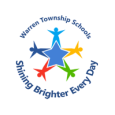Vision for Instruction and Learning
Vision for Instruction and Learning:
The following summarizes the district's overall vision for digital learning and responsibilities of school personnel and students in achieving this vision.
- Vision for Instruction and Learning:
- Effective instruction will enable all students to seamlessly use technology and/or environmental resources to transform their learning experiences.
- Vision for Staff:
- Staff will work collaboratively to effectively design differentiated and authentic experiences that require students to create and demonstrate learning in a 21st Century environment.
- Vision for Students:
- Demonstrate creative thinking, construct knowledge, and develop innovative products and processes using technology and/or environmental resources.
- Use digital media and environments to communicate and work collaboratively.
- Apply tools to gather, evaluate, and use information.
- Use critical thinking skills to plan and conduct research, manage projects, solve problems, and make informed decisions using appropriate 21st century tools and resources.
Expectations for Teachers:
- Collaboratively develop skills in educational technology applications and model appropriate use for students.
- Integrate 21st century technologies and strategies within the curriculum by designing and implementing instruction that promotes cross-curricular connections among disciplines and standards.
- Use available technology to create inclusive student-centered learning environments and support differentiation.
- Evaluate the current use of technology. Create professional learning plans to create individual professional goals that advance authentic and meaningful usage of technology and 21st century learning strategies.
- Support the achievement of the vision for student use of technology.
Expectations for Technology Teachers, Instructional Coaches, & Librarians
- Continually develop skills in the use of educational technology applications and model for district students and staff.
- Learn to adapt models for integrating 21st century technology across the curriculum.
- Support students and staff in evaluating information, effectively using collaborative tools, and integrating resources for research and projects throughout the curriculum.
- Serve as providers of embedded professional learning that support staff and students authentic use of technologies using SAMR or a similar model.
- Support the achievement of the vision for student use of technology
Expectations for Administrators
- Promote a collaborative approach to staff's planning and design of cross curricular and cross discipline learning experiences.
- Evaluate and use innovative scheduling models that promote integration and collaboration for staff and among students.
- Continually develop skills in the educational applications of technology in order to model appropriate use for staff.
- Learn about models for integrating technology across the curriculum and develop and support systems that enable effective use of models.
- Support staff's self-reflection using a model like SAMR (Substitution Augmentation Modification Redefinition) and the development of plans to advance staff growth.
- Use technology to effectively communicate with parents, students, and the school community at large.
- Support the achievement of the vision for student use of technology
Expectations for Students
- Continually develop skills in the use of educational technology, to improve learning, achieve goals, and to enhance productivity and performance.
- Develop literacy skills that promote effective use of information in digital and print form.
- Work in a collaborative environment in order to problem-solve, write, and research in a 21st century learning environment.
- Develop individual ability to think creatively and divergently.
- Learn to self-reflect on learning and evaluate strategies.
©2025 Warren Township Schools
Last modified on Thursday, January 4, 2018
Last modified on Thursday, January 4, 2018

 Contact Us
Contact Us